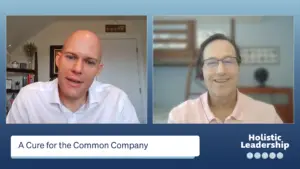Tearing Down the Barrier of Prior Authorization Through Automation
If you’ve ever had to chase down a prior authorization before getting your medical procedure approved for coverage, you’re not alone. According to a recent white paper by the American Hospital Association, prior authorization has been found to be a barrier to care, restricting access to coverage for many patients. Paul Shorrosh, founder and CEO of AccuReg is here to change that. Shorrosh sits down with host Kevin Stevenson to talk about the importance of pushing for change and adapting prior authorization automation.
According to Shorrosh, automating prior authorization helps hospitals and health systems integrate patient engagement, intake, and access to enable increased revenue. However, insurers have generally refused to automate. Instead, insurers have stayed old school, “So what they use is fax machines, phone calls, emails, and web portals,” said Shorrosh.
Prior authorization not only prevents patient care but often results in unpaid bills and coverage denials, “So nothing good comes out of that process especially when a lot of those procedures could be approved by the payer in advance if it were an easier, more automated modern process,” stated Shorrosh.
Given there is an existing industry standard, the 278 standard, for electronic authorization, widespread automation should not be an issue. However, Shorrosh said insurers are not being “held accountable to use it.”
Shorrosh’s solution is to use a best practice approach involving five steps, in order:
- Identity and demographic validation
- Eligibility and benefit verification
- Prior authorization requirement check
- Submission management platform; submit request to payer
- Retrieving authorization and status
Shorrosh said, “We’re not even asking the payers to reduce their requirements,” but pushing for change in an industry that is slow to adapt.
To encourage this, Shorrosh said, “I hope that CMS and government entities will help with that, make this electronic.”
Automating the prior authorization process not only improves speed of acceptance, but ultimately helps the patient.








